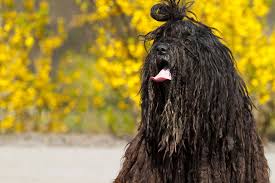Does Senilife work for dogs? The components of Senilife work synergistically and have a specific neuroprotective action to help combat your dog from the brain-aging-related behavior signs often seen in senior pets.
Is Senilife a prescription? The Senilife Supplement does not require a prescription.
How do you give Senilife? Senilife Directions:
For the standard Senilife capsule, place the entire capsule directly into your dog’s mouth, or place the capsule contents onto your dog’s food or directly into your dog’s mouth by cutting the upper portion of the capsule with scissors and squeezing out capsule contents.
What is Cholodin used for in dogs? Choline (brand name Cholodin®) is a vitamin that is used in detoxification pathways in the liver and as a precursor to nervous system chemicals such as acetylcholine and dopamine. Because of these effects, supplemental choline is used in dogs and cats with seizures and/or cognitive dysfunction.
Does Senilife work for dogs? – Additional Questions
Can Cholodin cause diarrhea?
oh yes diarrhea was fairly common.
What is the healthy food for dogs?
Salmon, shrimp, and tuna are all safe for dogs to eat and good sources of protein. Salmon and tuna are rich sources of omega-3 fatty acids, which can help keep a dog’s immune system, coat, and skin healthy. The B vitamins in shrimp can also help maintain a dog’s digestive system and promote healthy blood circulation.
How long does it take for selegiline to work in dogs?
Selegiline is the only FDA-approved treatment for canine cognitive dysfunction. Although the onset of action can be variable (between four and12 weeks), most dogs show some improvement after one month of treatment and there may be continued improvement over time.
How much choline does a dog need?
Dogs can synthesize choline in the liver. It is not considered a vitamin but is essential and is added to many commercial diets. AAFCO recommends 1,200 mg/kg DM for dogs.
What is choline chloride used for?
It is an important additive in feed especially for chickens where it accelerates growth. It forms a deep eutectic solvent with urea, ethylene glycol, glycerol, and many other compounds. It is also used as a clay control additive in fluids used for hydraulic fracturing.
Is choline toxic to dogs?
Choline supplementation is very safe and usually devoid of side effects. In dogs, rare instances of excitability/nervousness have been reported due to increased acetylcholine formation.
Why do dogs need choline?
Choline is an essential nutrient for dogs that impacts healthy brain development, muscle function, heart health, liver function as well as the nervous system. Like humans, dogs can produce choline; however, not enough to meet all their body’s requirements. A dietary supplement is vital to avoid choline deficiency.
What is a good source of choline for dogs?
Top off their food with high choline foods like peas or broccoli. You can even sprinkle a little flaxseed on their kibble, or mix in an egg for extra choline. High-quality dog food can provide a good source of choline for your dog.
What foods are high in choline?
Although foods rich in choline—liver, egg yolks, and red meat—tend to be higher in saturated fat, choline can also be found in foods lower in saturated fat including salmon, cod, tilapia, chicken breast, and legumes.
Is peanut butter high in choline?
A family favorite — as long as there aren’t any allergies — peanuts provide 24 milligrams of choline per 1/4 cup serving. Peanut butter has nearly as much, containing 21 milligrams in every 2 tablespoons, according to the USDA.
What animal protein is a good source of choline?
Sources of Choline
| Food |
Milligrams (mg) per serving |
Percent DV* |
| Beef top round, separable lean only, braised, 3 ounces |
117 |
21 |
| Soybeans, roasted, ½ cup |
107 |
19 |
| Chicken breast, roasted, 3 ounces |
72 |
13 |
| Beef, ground, 93% lean meat, broiled, 3 ounces |
72 |
13 |
Is chicken high in choline?
Chicken and turkey
Plus, chicken and turkey are a good source of choline, with both providing 72 mg per 3-ounce (85-gram) serving, or 13% of the RDI ( 3 , 18 ).
What is the best form of choline?
Rich food sources of choline include beef liver, eggs, fish, nuts, cauliflower and broccoli. Choline can also be taken as a supplement, of which CDP-choline and alpha-GPC seem to be the best types.
Does cooking eggs destroy choline?
The USDA ranking list allows comparisons of raw vs cooked foods that indicate choline is not destroyed by cooking, e.g., raw egg yolk contains 820 mg per 100 g whereas cooked dried egg yolk contains 2403 mg per 100 g.
What are the symptoms of low choline?
Symptoms of a choline deficiency may possibly include:
- low energy levels of fatigue.
- memory loss.
- cognitive decline.
- learning disabilities.
- muscle aches.
- nerve damage.
- mood changes or disorders.
How quickly does choline work?
In humans choline bitartrate increases choline blood plasma levels within 1 hour after ingestion [57, 58] and with brain concentrations peaking around 2 hours until at least up to 3 hours after ingestion [59, 60]. Choline’s effects on the cholinergic peripheral system peaks between 1 and 2 hours after ingestion [46].
Does choline make poop?
Choline may cause a stomachache, diarrhea, or loose stools. This can happen at normal doses. Large amounts (about 20 g) of choline may cause other side effects. These can include dizziness, low blood pressure (hypotension), and fishy body odor.
